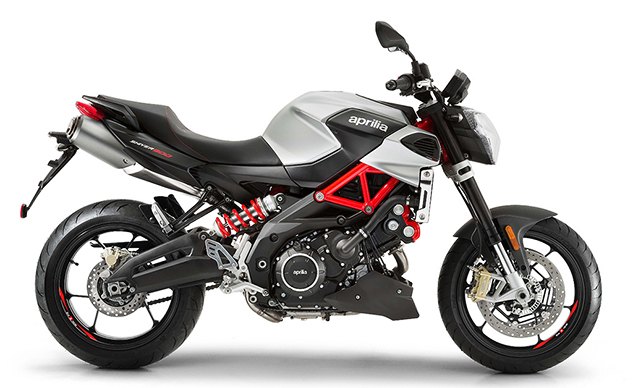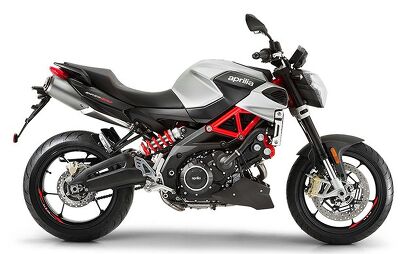The Missing Linkage
Ask MO Anything: What's a linkage suspension and why would I need one?
Dear MOby,
Say, what’s all this about linkage-type suspensions and non-link-type ones anyway, and what difference does it make? What’s the difference between a progressive spring and a normal one, and what’s all this rising-rate business?
Suspended Disbelief
Dear Suspended,
The Aprilia Shiver pictured above and lots of other bikes use a plain old non-link type suspension, wherein the swingarm is simply connected to the frame via the rear shock absorber. Its main advantage is that it’s simple, lightweight, has no bearings that need lubricating and doesn’t take up much space. On a bike that doesn’t need a lot of wheel travel, it’s perfectly adequate.
A disadvantage, in the Shiver’s case, is that its spring is just as stiff over small bumps as it is over bigger ones, since it’s a “straight-rate” suspension; the suspension doesn’t get stiffer as the rear wheel moves higher in its travel.
Old-fashioned dual shocks like the ones on this Harley Sportster are also “linkageless,” but H-D gets around the lack of a rising rate by winding these particular shocks with progressive springs, which are softer in the first part of wheel travel to soak up small bumps, and stiffer over larger bumps. The first bit of wheel travel mashes the tighter coils at the top of the spring together so there’s no space left between them, called “coil bind.” Once that happens, there are fewer coils to compress, which effectively makes the spring stiffer. Progressively wound springs are a cheap and easy way to achieve a rising-rate suspension, i.e., the further the suspension is compressed the stiffer it gets.
Linkageless suspension works well enough for KTM to use it on most of its motorcycles, including the highly praised Superduke 1290 GT, whose rear end you’re looking at here. It’s harder to see here, but that’s also a progressive spring, and the shock is bolted directly to the swingarm without a linkage. Again, light, simple, few moving parts – and on the Superduke, extremely effective in terms of providing a plush ride that stiffens up when needed.
I don’t remember who came up with the first link-type rear suspension, but just about every current serious sportbike, sport-tourer, and upscale motorcycle uses one. Instead of bolting the shock directly to the swingarm, a linkage system consists of a pair of levers or two, and other parts that connect the shock to the swingarm.
Among the advantages of a link suspension is the ability to tune in as much rising rate as you want by switching the lengths and shapes of the components. Through the magical power of leverage, link-type suspensions make it easy to provide a smooth ride over small bumps and a more controlled one over bigger bumps. The shock itself can be smaller, since the linkage can turn not much shock stroke into quite a bit of rear-wheel travel, and it can be tucked out of the way in what might otherwise be wasted space.
Though that wasted space could be on the left side of the bike just as easily, like where Ducati put the V-Twin Panigale’s man tackle.
Freddie Spencer says it was Honda’s Pro-Link suspension on his grand-prix racebike that made him the champ he is today. He may be exaggerating, but who are we to question? You can get as complicated as you want to with all this if you’re the mathematical type; for more detail, Graham Byrnes, PhD, seems to know what he’s talking about.
Send your moto-related questions to AskMOAnything@motorcycle.com If we can’t answer them, we’ll at least do no harm in the time it takes to seek out a believable answer.
Recent Ask MOs:
Which Motorcycles Have Helmet Locks?
How Much Better are Tires Compared to 30 Years Ago?
Will I be Shunned If I Ride an Automatic Motorcycle?
More by John Burns








































Comments
Join the conversation
This article is factually flawed. Canting a shock onto a swing arm provides a rising rate in and of itself. ATK and KTM lived off of this for years and Husqvarna and KTM have both resisted linkage suspensions with this justification. Unless a shock is at a percect 90 degree angle to the swingarm the is a rate change during compression. On short travel suspensions a proper canting the right spring and valving work very well.
Good article, Mr Burns! 👍